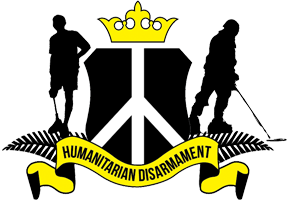Are major powers changing their approach in acting on humanitarian disarmament concerns? It seems unlikely, but one new indicator is seen in the unanimous support given to the first multilateral discussions to be held on the topic of “lethal autonomous weapons systems.”
A new short film by the Campaign to Stop Killer Robots shows how nations participating in the annual meeting of the Convention on Conventional Weapons (CCW) in November 2013 agreed to begin work on the questions related to these emerging technologies. The CCW’s framework convention has 117 members, including all five permanent members of the UN Security Council (P5), most European Union nations, and leaders from the non-aligned movement and “eastern” block countries, Cold War-era factions of of states that still function in Geneva.
The rare diplomatic consensus in a traditional multilateral disarmament forum on a new topic that had never been considered before deserves closer examination. The CCW mandate came swiftly, exactly one year after Human Rights Watch issued Losing Humanity—the first in-depth report by a non-profit organization to outline concerns with fully autonomous weapons—and six months after the launch of the Campaign to Stop Killer Robots, the global coalition of NGOs calling for a preemptive ban on the development, production and use of the weapons. It came after nations first debated the topic at the Human Rights Council on May 30, following the delivery of a report by UN special rapporteur Christof Heyns that called on nations to enact moratoria on lethal autonomous robots until an new international treaty can be established.
In that first debate, the US, UK and other nations proposed that another forum would be more appropriate to consider autonomous weapons, namely the Convention on Conventional Weapons and in the week leading up to the CCW mandate disarmament diplomat from P5 nations hinted at the rationale behind their support for the work. One warned that “the CCW must not become the CD” in reference to the moribund Conference on Disarmament, which has been unable to engage in any substantive work over the past 17 years. Another claimed that this time things would be “different,” emphasizing lessons learned from the “Ottawa” or “Oslo” processes undertaken outside UN auspices that resulted in the treaties banning landmines and cluster munitions.
In the end the CCW mandate to address killer robot concerns was supported by nations that have blocked consensus in the past such as Cuba and Pakistan, while China and Russia grudgingly did not object. The United States sought “substantive” talks for a longer period, while the UK agreed as long as armed drones were not discussed.
The CCW experts meeting on killer robots will be held at the UN in Geneva on 13-16 May 2014 and chaired by Ambassador Jean-Hugues Simon-Michel, permanent representative of France to the Conference on Disarmament. The event is itself preceded by a long line of experts meetings convened within a matter of months by actors including the International Committee of the Red Cross (ICRC), UNIDIR, Chatham House, and the Geneva Academy of International Humanitarian Law and Human Rights, and the European University Institute. The UN Secretary-General’s Advisory Board on Disarmament Matters and other bodies are deliberating on the topic.
As the Campaign to Stop Killer Robots has noted, the level of interest demonstrates how the issue of dealing with autonomous weapons has vaulted to the top rank of traditional multilateral arms control and humanitarian disarmament, validating the importance and urgency of the issue and undercutting arguments that fully autonomous weapons are “inevitable” and “nothing to worry about.”
Many questions must be considered with respect to killer robots, most fundamentally whether it is right to cede human control over targeting and kill decisions to machines. Protecting the principle of human control via an international ban treaty will require deliberation on a number of matters, not least how to draw the line when it comes to defining “meaningful or “adequate” human control.
Expectations are running high for the CCW work on killer robots, but the stage is set in May for deliberations over the numerous technical, ethical, operational, legal, and other concerns that have been expressed with the weapons rather than negotiation of a ban. The decision on whether to proceed to the next level of discussion—perhaps a more formal “group of governmental experts”—will be taken by nations on 14 November 2014 at a meeting chaired by Poland’s Ambassador Remigiusz A. Henczel.
Compared to his nuclear weapons work on a fissile material cut-off treaty and the generally dim view of France’s implementation of the Non-Proliferation Treaty, Ambassador Simon-Michel seems to be relishing his CCW role on killer robots, where France can play the “good guy.” Exactly how “good” France and other major powers turn out to be is yet to be seen.
Left behind as major powers pick up the CCW work on killer robots is the Conference on Disarmament, what was intended as the preeminent multilateral negotiating forum on disarmament, but it has been unable to do any substantive work since 1997. Civil society has turned elsewhere—anywhere else—in the interest of achieving progress notes the Women’s International League for Peace and Freedom (WILPF), which celebrates its 100th anniversary in 2015.
As UN Disarmament’s Geneva director Jarmo Sareva told the Campaign to Stop Killer Robots in its short film, the UN wants to see “new success stories” in disarmament and acknowledges that it needs to cooperate with civil society partners to convince governments to achieve that.
See also “United Nations the next stop for killer robots” (April 2013)
Photo: “Springtime in the Ariana Park” (c) UN Geneva


Leave a Reply